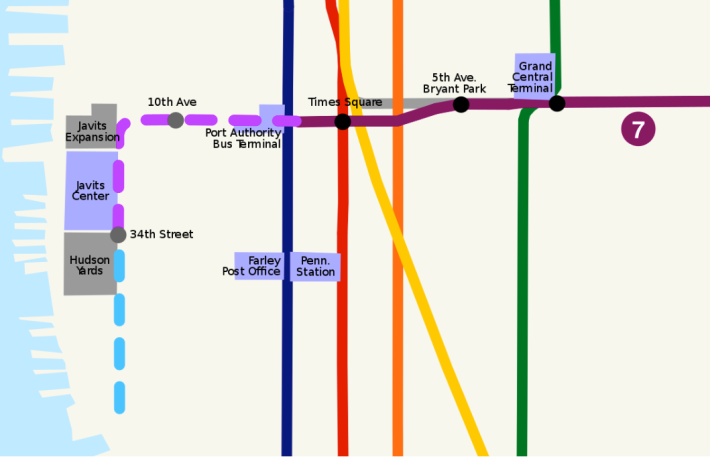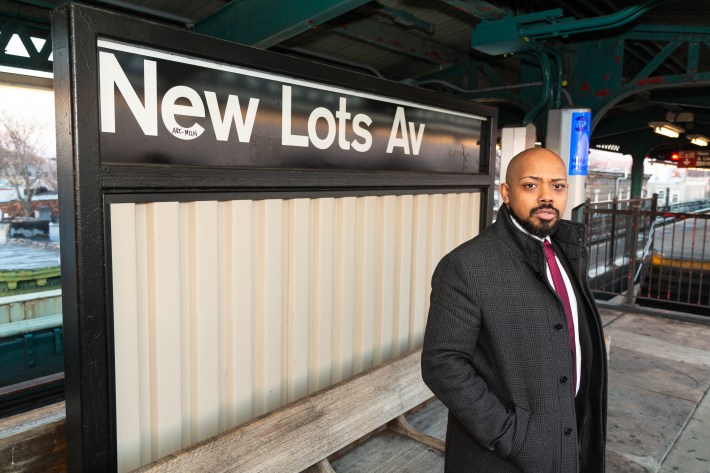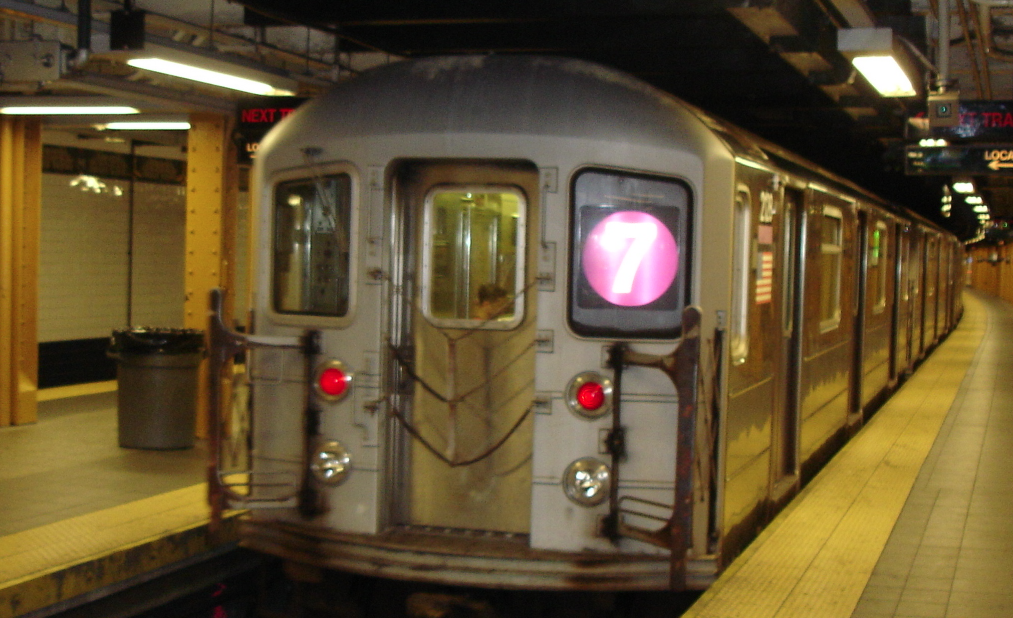A candidate for City Council is making the (still incomplete) No. 7 subway line extension an issue in the race for Speaker Corey Johnson's seat on the West Side — saying that the city can't afford to miss out, yet again, on federal infrastructure spending that could improve its transit system.
Erik Bottcher, a Council candidate for the free-for-all West Village, Chelsea and Hells Kitchen seat and Johnson's chief of staff, is seeking to revive plans for a No. 7 station at Tenth Avenue and 41st Street — which was proposed, but never finished, during the city-funded extension of the 7 to 11th Avenue and 34th Street as part of the Hudson Yards rezoning in the mid-2000s. Bottcher says that just a few hundred thousand dollars from the MTA, the Empire State Development Corporation, or the city's Economic Development Corporation could fund a feasibility design study that could make the proposed station shovel ready in time to reap funding from the Biden Administration's federal infrastructure package.
"We missed out in 2009 on the Obama stimulus infrastructure funding," he told Streetsblog. "We can't keep losing opportunities."
The Flushing line extension, first proposed in 2005, brought the train 1.5 miles westward from its then-terminus at 41st Street and Seventh Avenue to 11th Avenue and 34th Street as part of the Hudson Yards redevelopment project, which comprised more than a dozen residential or commercial towers and a huge retail complex on a platform over the Long Island Rail Road train yards on the far West Side. (More towers are in the offing; the city anticipates the project's completion in 2024.)
The 11th Avenue station, after some delays, opened in 2015. But the Tenth Avenue station was cut from plans when the $2.4-billion project experienced cost overruns — with "provisioning" left for future platforms under 41st street between Tenth and Dyer avenues, if the funds ever materialized. According to some analysts, the MTA declined to pursue federal funding for the station because it would have competed with funding for other MTA projects, including East Side Access and the Second Avenue Subway. The MTA looked again at plans for the Tenth Avenue station in 2016, but those researches apparently went nowhere.

Bottcher's proposal to revive the station excited transit experts.
With population in the area having burgeoned and set to grow even more, a 41st Street station has become imperative, neighborhood activists say — especially because the Port Authority Bus Terminal, at 41st Street and Eighth Avenue, will undergo a long overdue revamp that should draw even more people to the area.
“This station was part of the Hudson Yards plan,” said Christine Berthet, co-founder of the Clinton Hell’s Kitchen Chelsea Coalition for Pedestrian Safety, said in a statement. “Since then the population has exploded in the area and the new Port Authority Terminal will bring a huge influx of travelers. It is time the MTA and the city live up to their commitment and finish the station.”
Bob Benfatto, executive director of the Hudson Yards Hells Kitchen Alliance, a business improvement district, seconded Berthet's sentiment, saying that the several 50-story buildings going up in the area, all of which have commercial properties on their ground floors, demanded another subway stop.
But at least one other candidate begged to differ. Safe-streets bete noire Arthur Schwartz, himself a lawyer for (and endorsee of) the Transport Workers Union (that is, the folks who staff our subway), said there are other priorities for the subway system.
'The principal area we need funding for is elevators," Schwartz said, noting that only a quarter of the stations are Americans with Disabilities Act compliant. "It's more important to put in elevators than to build another subway station."
Schwartz said that he had recently worked with the group Disability in Action to get the MTA to add elevators to stations on the Sixth and Seventh Avenue lines in the district, on the F, L and 1,2, and 3 trains. The authority had agreed to add four, but ponied up two more on account of Schwartz's work with the disability group, he said.
"It's nice that Erik is finally discovering the subway system," Schwartz jibed.
Six candidates are vying for the seat in CD3. Another leading contender, Leslie Boghosian Murphy, told Streetsblog that others have been at the forefront of the fight for the Tenth Avenue station.
"This is not a new idea nor fight," she said in an email. "We in the community and at Community Board 4 have been advocating for this for years, ironically to the City Councilmember’s office which Erik was a part of. The timing of his interest is curious, especially to those of us public transportation proponents who have been banging the drum on this, and other improvements, for a while."

Manhattan isn’t the only place where activists and candidates are calling for major investments in critical infrastructure.
In East New York/Brownsville, Wilfredo Florentino, a candidate for the 42nd Council District seat, has long called for the MTA to extend the IRT No. 3 train from its present terminus at New Lots/Livonia Avenue to the Livonia Avenue Maintenance Yard, which he said would not represent significant infrastructure spending because the tracks exist. That would help residents of the Nehemiah Houses and other local developments that are ill-served by transit, Florentino said.
"All too often the focus is on Manhattan and not on neighborhoods such as East New York and Brownsville that suffer transit inequality," Florentino said.
This story was updated to reflect the comments of Leslie Boghosian Murphy, who got back to us after initial publication.







